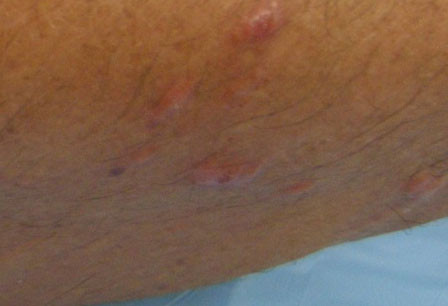Summary
Definition
History and exam
Other diagnostic factors
- previous exposure
- breathing difficulties
- generalized erythroderma
- periorbital edema
- systemic contact dermatitis
- black-spot dermatitis
Risk factors
- occupation that involves exposure to relevant trees and plants
- outdoor activities
- domestic pets and livestock
- use of forestry equipment and machinery
- smoke from burning Toxicodendron species
- children
- genetic susceptibility
Diagnostic tests
Treatment algorithm
Contributors
Authors
Marius Rademaker, BM FRCP, FRACP DM, FNZDSI
Honorary Associate Professor of Dermatology
Waikato Clinical Campus
University of Auckland
Hamilton
New Zealand
Disclosures
MR declares that he has no competing interests.
Peer reviewers
Brian Swick, MD
Clinical Assistant Professor
University of Iowa College of Medicine
Iowa City
IA
Disclosures
BS declares that he has no competing interests.
Christopher Lovell, MBBS
Consultant Dermatologist
Kinghorn Dermatology Unit
Royal United Hospital
Bath
UK
Disclosures
CL declares that he has no competing interests.
References
Key articles
Guin JD, Beaman JH, Baer H. Toxic anacardiaceae. In: Avalos J, Maibach HI, eds. Dermatologic botany. Boca Raton, FL: CRC Press; 1999.
Rozas-Muñoz E, Lepoittevin JP, Pujol RM, et al. Allergic contact dermatitis to plants: understanding the chemistry will help our diagnostic approach. Actas Dermosifiliogr. 2012 Jul-Aug;103(6):456-77.Full text Abstract
Guin JD, Beaman JH. Toxicodendrons of the United States. Clin Dermatol. 1986 Apr-Jun;4(2):137-48. Abstract
Paniagua CT, Bean AS. Black-spot poison ivy: a rare phenomenon. J Am Acad Nurse Pract. 2011 Jun;23(6):275-7. Abstract
Reference articles
A full list of sources referenced in this topic is available here.
Use of this content is subject to our disclaimer
